SUMMARY
This is AI generated summarization, which may have errors. For context, always refer to the full article.
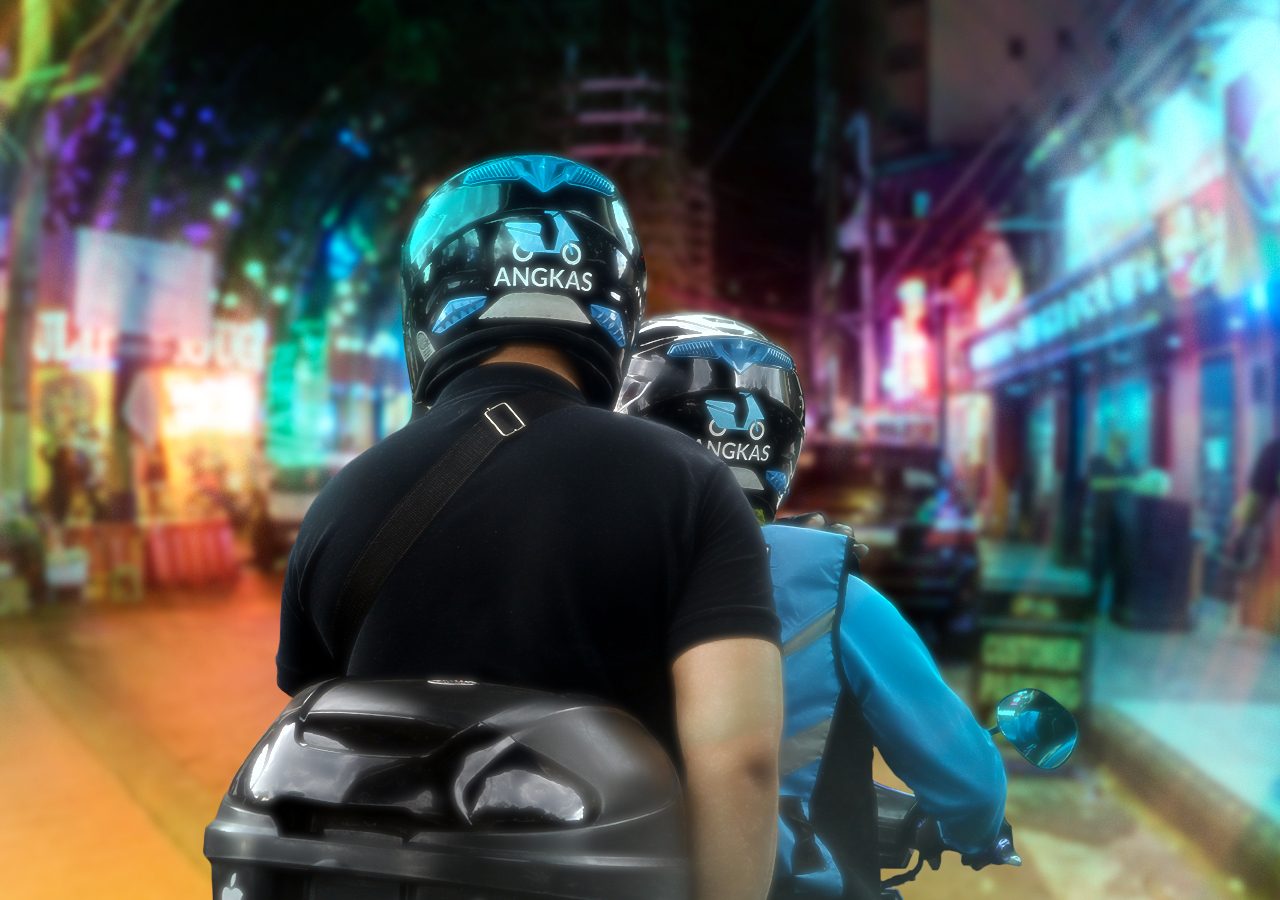
MANILA, Philippines – Jabel Bautista has always loved riding his motorcycle. He’s been riding for as long as he can remember.
When his friend told him about Angkas in 2017, Jabel took the chance to be a part of it.
He initially worked the app part-time. After working as a debt collector for another company at 5 pm, he would start his shift, accepting passengers up until midnight.
“Angkas wasn’t that well known yet so I’d be able to pick up passengers all the way in Ortigas yet from my office in barangay San Miguel (in Pasay),” Jabel said in Filipino.
Angkas was founded in 2016 by Singaporean Angeline Tham, after personally experiencing the swell of traffic in the Philippines. She wanted to come up with a solution that would get passengers around the city both safely and on time.
Metro Manila is notorious for being the “most congested city” in developing Asia, even ranking 9th globally in the TomTom 2022 Traffic Index. Mass transport is sorely lacking, making the demand for public transportation and alternative means of mobility soar.
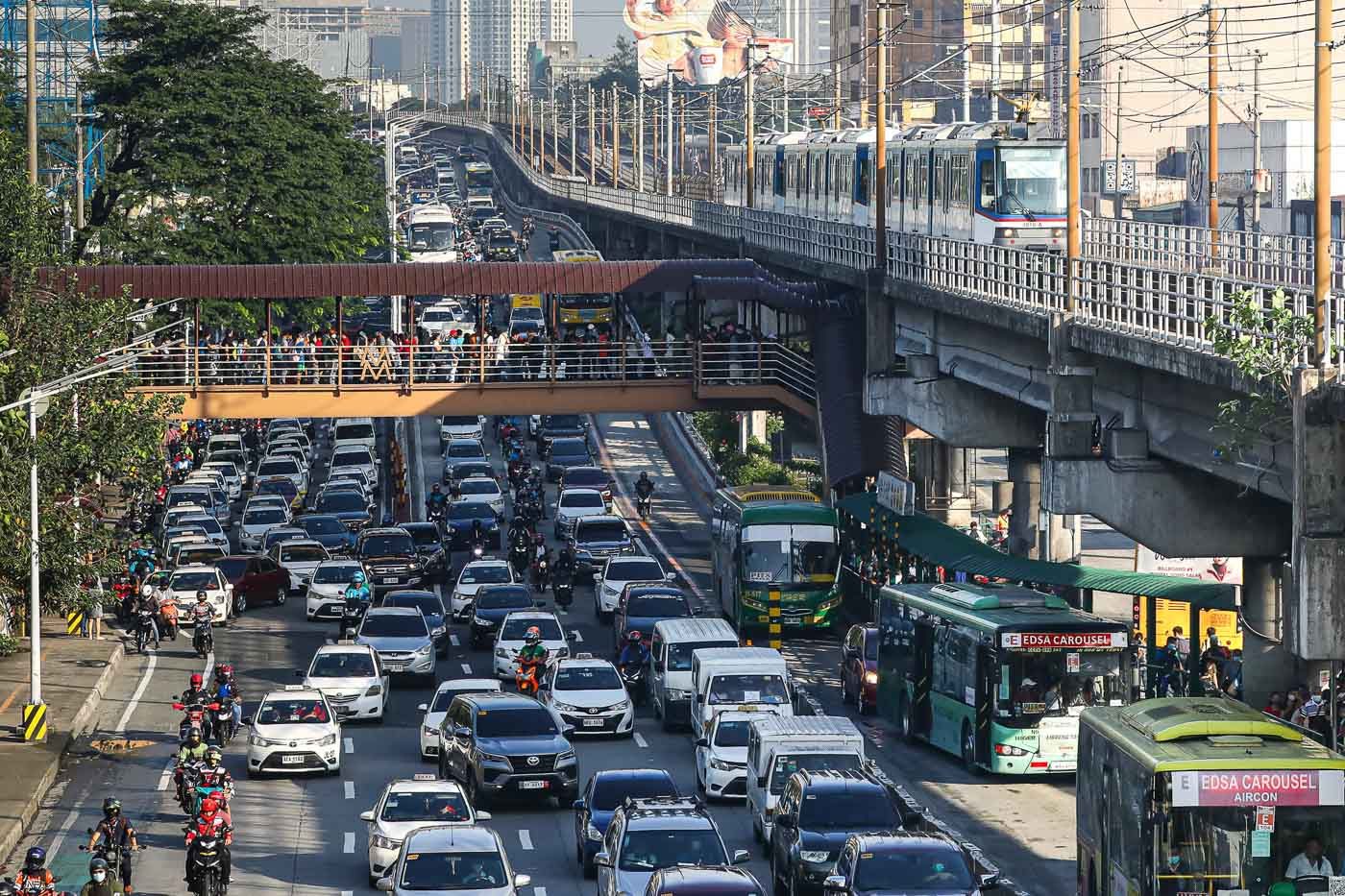
GrabBike was an early alternative, offering motor taxi services in November 2015, but it was shut down in January 2016 by the Land Transportation Franchising and Regulatory Board (LTFRB) due to the lack of guidelines and regulations for that kind of transportation at the time.
Now, rider services like Angkas, Joyride, and MoveIt have risen to prominence in efforts to formally franchise this mode of transport. With the transportation strike this week intended to protest against the forced consolidation of jeepney drivers and modernization of jeepneys, alternative transport became all the more visibly necessary.
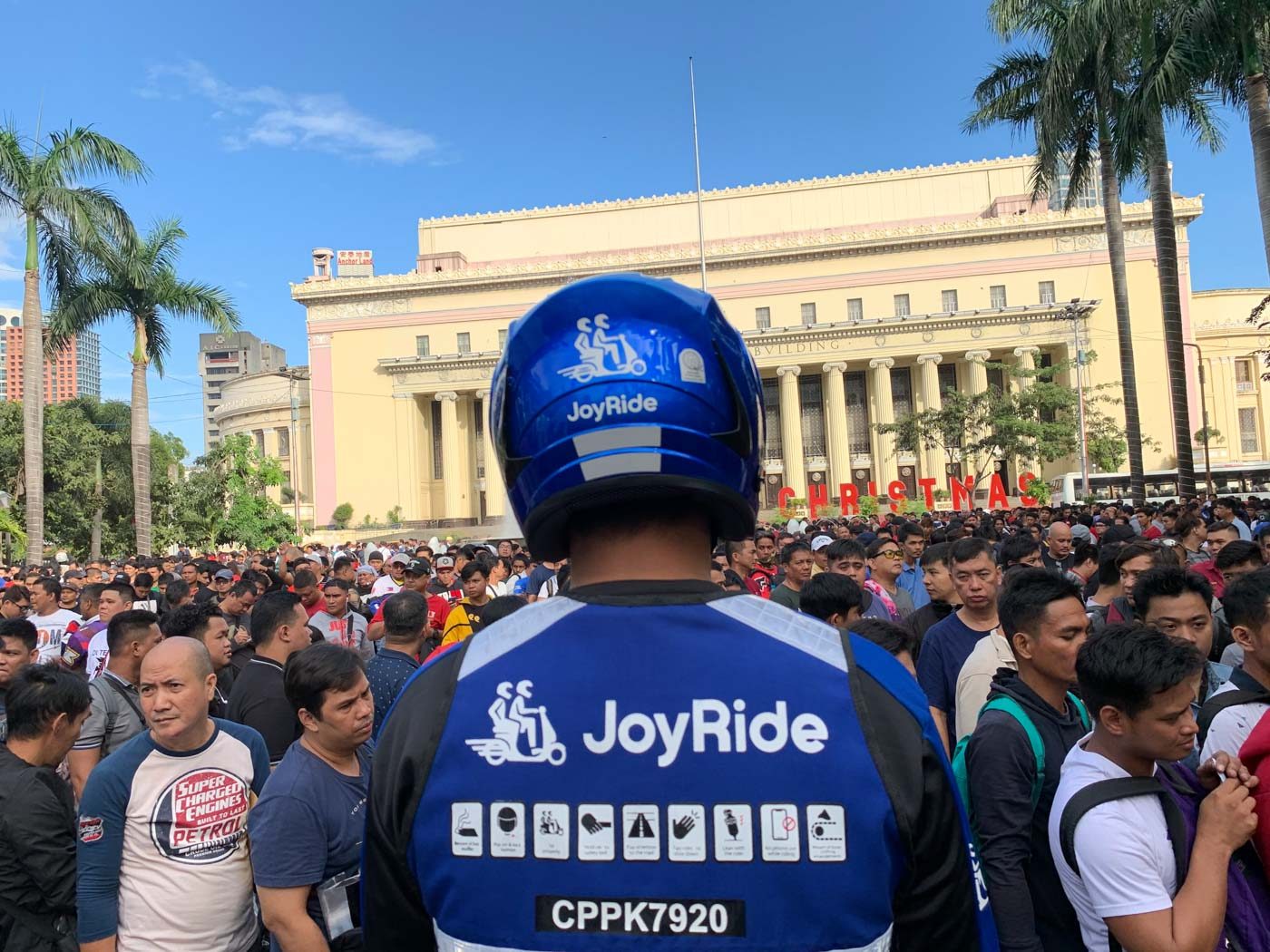
Years back during the pandemic, rider services were tapped for the delivery of vital goods such as food, water, and medicine around the metro. After a drop due to the pandemic, the business eventually attracted more riders, some of whom opted to leave their full-time jobs.
According to a December 2022 CNN interview with Tham and CEO George Royeca, Angkas alone has on record about 30,000 registered riders operating in Metro Manila and parts of Metro Cebu.
The total number of riders for the three services is estimated at conservatively over 60,000.
Shifting jobs
Russel Pascual quit his business process outsourcing (BPO) job and committed to Angkas full-time. “Last year lang, bumalik ako sa pag-a-Angkas… ni-lift na ‘yung work-from-home, so sabi ko, ‘balik na lang ako Angkas…‘yun talaga ang calling ko eh.’ Mas masaya akong makipag-usap sa mga tao, mas nag-e-enjoy ako eh.”
(I went back to Angkas last year…the work-from-home mandate was lifted, so I told myself, “I’ll just go back to Angkas…that’s my calling.” I’m a lot happier talking to people, and I enjoy it more.)
Jabel also came to the same decision, realizing that his set-up of working a full-time job in the day, then working as a rider in the evening was not sustainable. Most importantly, he wanted to be able to see his children.
“I guess I got tired of working office hours. But first and foremost I wanted to spend more time with my children,” he said in Filipino. He took the leap and also did ride-sharing full-time.
Angkas head of transport operations David Medrana sees their riders as “independent partners” who work at their own pace and time. “[They] have the ability to manage their own schedule while making a fair wage to support their families.”
Josef Bautista and Jerry Santos were part of the second batch of riders Angkas recruited in 2017. They saw the need to help both passengers and fellow riders.
Josef worked full-time in a BPO company, while he worked as a rider on the side. He said his primary purpose is helping fill up the demand of customers, with earning only secondary.
He saw the need to help passengers, especially students, who needed to beat the traffic. Josef would sometimes reduce the fare students pay him so that they could spend it elsewhere.
“Ginagawa ko, ‘yung mga estudyante, halos nililibre ko na lang ‘yung pamasahe…nakakatulong, to be honest. May trabaho na ako eh…gusto ko mag-ride lang.” (What I do for students is, I practically give rides for free…to be able to help, to be honest. I already have a job…I just want to ride.)
Jerry also saw riding as a way to help commuters. “This is where our being volunteers comes in,” he said in Filipino. “With charity.”

Even if they are no longer part of Angkas, they still do favors for friends and past passengers who need transportation in a pinch.
For Jabel, the night shift gave him many opportunities to interact with passengers from all walks of life.
“Masaya kasi in-e-enjoy ko ‘yung trabaho ko…. lalo na kung pasahero ko eh mahilig makipagkuwentuhan, kinukuwentuhan ko rin,” he said. (It’s fun because I enjoy the job…. especially if passengers like telling stories, I tell them stories, too.)
Liveable?
Jabel said that his night shifts would earn him anywhere between P1,800 to P3,000 on average. To get the most out of his shift, he already knows when booking is at its peak.
“Sa tagal ko kay Angkas, nalaman ko na kung anong araw ang malakas ang biyahe, lalo na’ pag sahod, mas malakas magbiyahe.” (I’ve been with Angkas for so long, I already know which days trips would be highest in demand, especially when it’s payday.)
Russell would work all week ferrying passengers all over the city. “Normally, 7 nang umaga hanggang 9 nang gabi…araw-araw.” (Normally, 7 in the morning till 9 in the evening…every day.)
Russell said he earns P2,000 a day from his 10-hour shift.
Medrana said their riders earn an average of P1,500 per day or P45,000 a month. According to riders on the street, Angkas and Joyride take a 20% commission per trip, with the remaining 80% going to them.
Royeca said in the CNN interview that the company has helped their riders support their own families and even start businesses. “[E]very single biker on our platform is out of the poverty line,” he said.
18 million motorcycle owners come from low-income families, according to Royeca.
When asked if what he earns was liveable, Russell said that because he sends his child to a private school and there are other expenses for the household, he is still looking for other sources of income.
“It’s expensive, that’s why I look for other means. My wife does live selling and earns extra,” Russell said in Filipino.
Safety, in numbers
Angkas is one of many rideshare apps providing a solution to a growing problem in the metro’s transportation crisis.
According to an August 2022 Social Weather Stations survey, 37% of Filipinos own two-wheeled motor vehicles, more than other modes of transportation. Only 6% of Filipinos own a four-wheeled motor vehicle.
Motorists not only have to contend with overloaded road systems, but also navigate potholes and steel plates meant as stopgap measures for road repairs.
UK comparison services platform Confused.com ranked the Philippines 8th among countries with the worst quality roads in the world, based on the 2019 World Economic Forum Global Competitiveness Report.
The World Health Organization’s Global Status Report on Road Safety in 2018 said that 5% of 12,690 vehicle accidents involved two- or three-wheeled motor vehicles.
94% of deaths in the report are unaccounted for, meaning, the numbers could be much higher.
According to the Metro Manila Development Authority’s (MMDA) Metro Manila Accident Recording and Analysis System 2021 report, 26,768 of road accidents in the metro involved motorcycles, making up close to one-fourth or 23.85% of all crashes that year. The MMDA, however, does not distinguish between crashes involving ride-hailing apps and privately-owned motorcycles.
How do ride-hailing companies reconcile the risks, when 65% of road injuries in the country involve motorcycles? Royeca said in the TV interview that because there was no formal training for motorcycle riders available, they have had to create a program to educate their riders.
They have institutionalized training of riders to avoid crashes like what happened more than five years ago in July 2017, when an Angkas passenger and rider fell to the ground after the vehicle in front of them made an abrupt stop. The passenger was hit by an SUV behind them, leaving him in critical condition.
A Joyride passenger was also involved in an accident in early 2023, after being rear-ended by a passenger bus, according to a Philstar report.
Medrana, however, claimed a high safety rate for Angkas, but this could not be independently verified.
Pandemic services
Traffic in Manila not only affects commuters, but also affects the delivery of vital goods.
At the onset of the COVID-19 pandemic, many riders were out of a job, mostly due to the lack of demand for transportation. Many shifted their efforts to goods transportation, when only a few were given access to different parts of the metro.
Josef and Jerry helped deliver goods such as food and other necessities, being the link to families and friends across cities for support.
“Gamot, pagkain, i-PM ninyo ako, ihahatid ko, kasi I had access sa mga checkpoints. Pero hindi ko siya pinagkakitaan,” Josef said. (Medicines, food, just private-message me and I’d deliver them because I had access to checkpoints. But I didn’t make money out of this.)
Jerry was also on retainer for a business that transported goods during the pandemic.
Josef was one of the “blood riders” or bikers tasked with transporting packs of blood between hospitals in Metro Manila.
The Philippine Red Cross had also partnered with the company to provide home service saliva RT-PCR tests, and riders were trained to collect samples and deliver them for testing.
Legitimized, recognized
Despite efforts from both rideshare companies and advocacy groups, issues have arisen pertaining to the legitimization of habal-habal, especially with the LTFRB.
Habal-habal, the colloquial term for motor taxis, has long existed as an alternative form of transportation for commuters looking to squeeze past Metro Manila traffic.
Jabel remembered when Angkas was forced to close down. Every December, he said, there would be moves to close down Angkas – it happened in 2017 and 2018. That’s why in 2019, he said, “pinaglaban na namin diyan sa White Plains (we fought for it in White Plains),” he recalled.

The company was ordered closed in November 2017 when it was unable to provide business permits to the LTRFB. Angkas riders’ vehicles were detained in December 2018 after the Supreme Court issued a temporary restraining order, reversing an earlier decision by the Mandaluyong City Regional Trial Court that allowed the company to operate.
All the riders agreed that habal-habal should be regulated and legalized, mainly to protect the interests and welfare of their passengers.
“Mas maganda kung ma-le-legalize…kung lalagay nila sa magandang sistema,” Jabel said. (It’s better if they’re legalized…if they’re put in a better system.)
At the end of the day, Jabel said it’s the fulfillment he gets from the job that gets him to stay.
“Sa ganitong trabaho namin, masaya, sobrang saya…kung gusto mong bumiyahe ka ng isang araw, kikita’t kikita ka.” (In our line of work, it’s really fun…if you work the entire day, you will definitely earn.)
Josef and Jerry gave advice to those who want to get into the work: “Lumawak ang paunawa mo. Sa araw-araw namin sa kalye, marami kang ma-wi-witness talaga,” Josef said. “Pahabain lang ang pasensiya.”
(Expand your perspective. Being on the road every day, you will really witness a lot of things. Have more patience.)
Jerry said knowing he did a job at the end of the day was enough for him.
Russel likened his life to a motorcycle. “…kahit anong lubak ang daanan mo sa daan, diretso pa rin ang andar mo eh. Kailangan mo pa rin makarating sa paroroonan mo. Kaya push lang nang push, kahit anong hirap ng buhay, sige lang,” he said.
(…no matter how bumpy the road gets, you still move forward. You need to get to your destination. Continue to push, no matter how difficult life gets, you push.)
He added, “Kahit masiraan ka sa daan, huminto ka, tuloy pa rin, aandar at aandar ka pa rin.” (Even if you break down and stop, continue on, and you will keep moving.)” – Rappler.com
Add a comment
How does this make you feel?


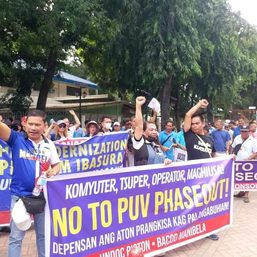
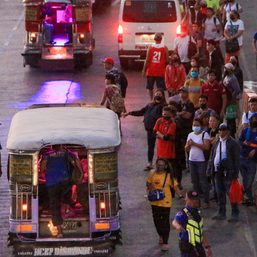
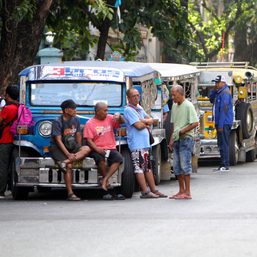




![[Under 3 Minutes] When will we see modern jeepneys on the road?](https://www.rappler.com/tachyon/2024/04/francisco-motors-modern-jeepney-prototype-1.jpg?resize=257%2C257&crop=590px%2C0px%2C1012px%2C1012px)




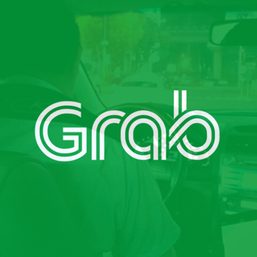



![[EDITORIAL] Kamaynilaan para sa tao, hindi para sa mga sasakyan](https://www.rappler.com/tachyon/2024/04/animated-traffic-april-2024-carousel.jpg?resize=257%2C257&crop=410px%2C0px%2C720px%2C720px)
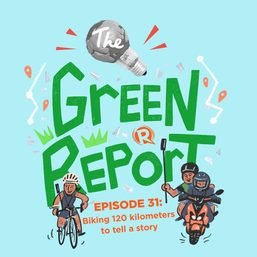
![[Rappler’s Best] Where the streets have no name](https://www.rappler.com/tachyon/2024/03/2-1.jpg?resize=257%2C257&crop=307px%2C0px%2C720px%2C720px)
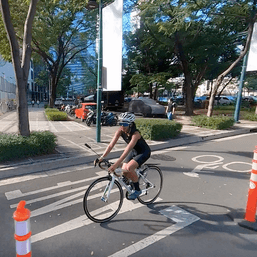
There are no comments yet. Add your comment to start the conversation.